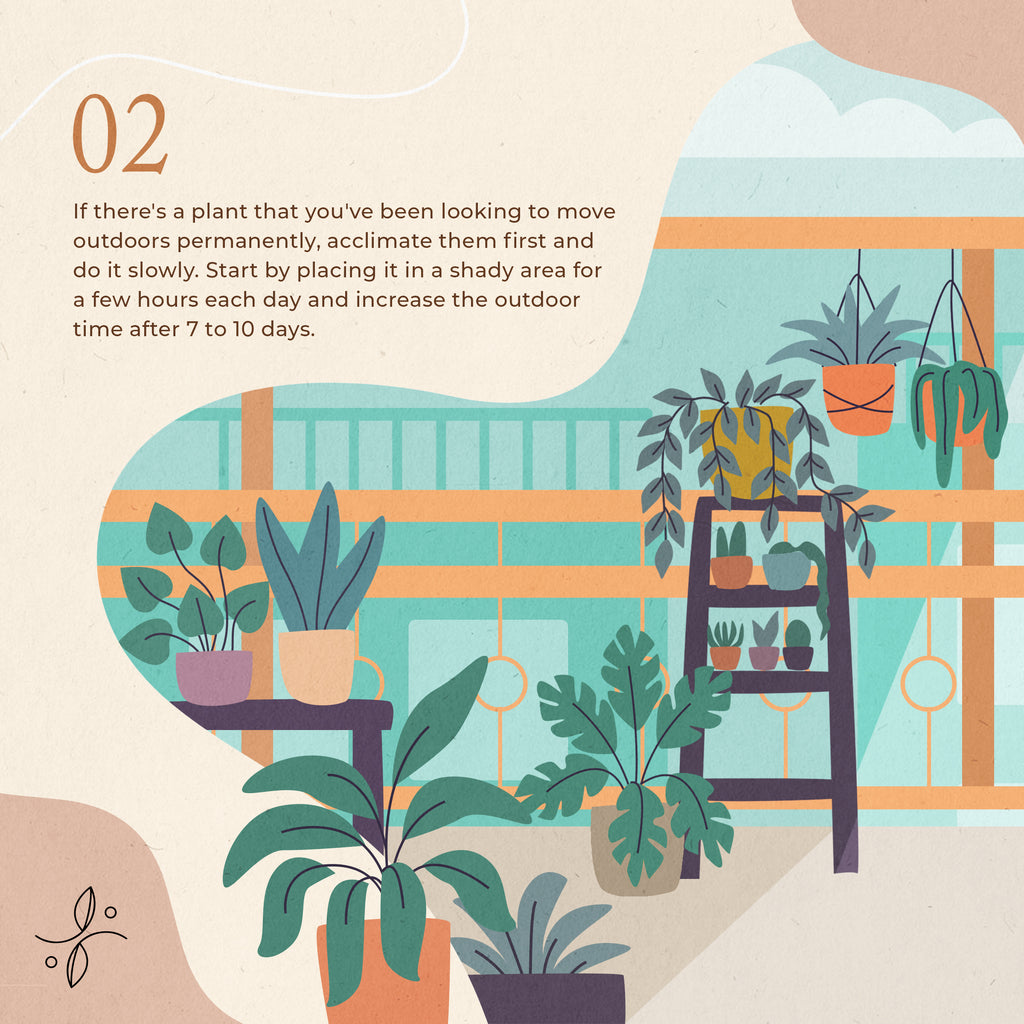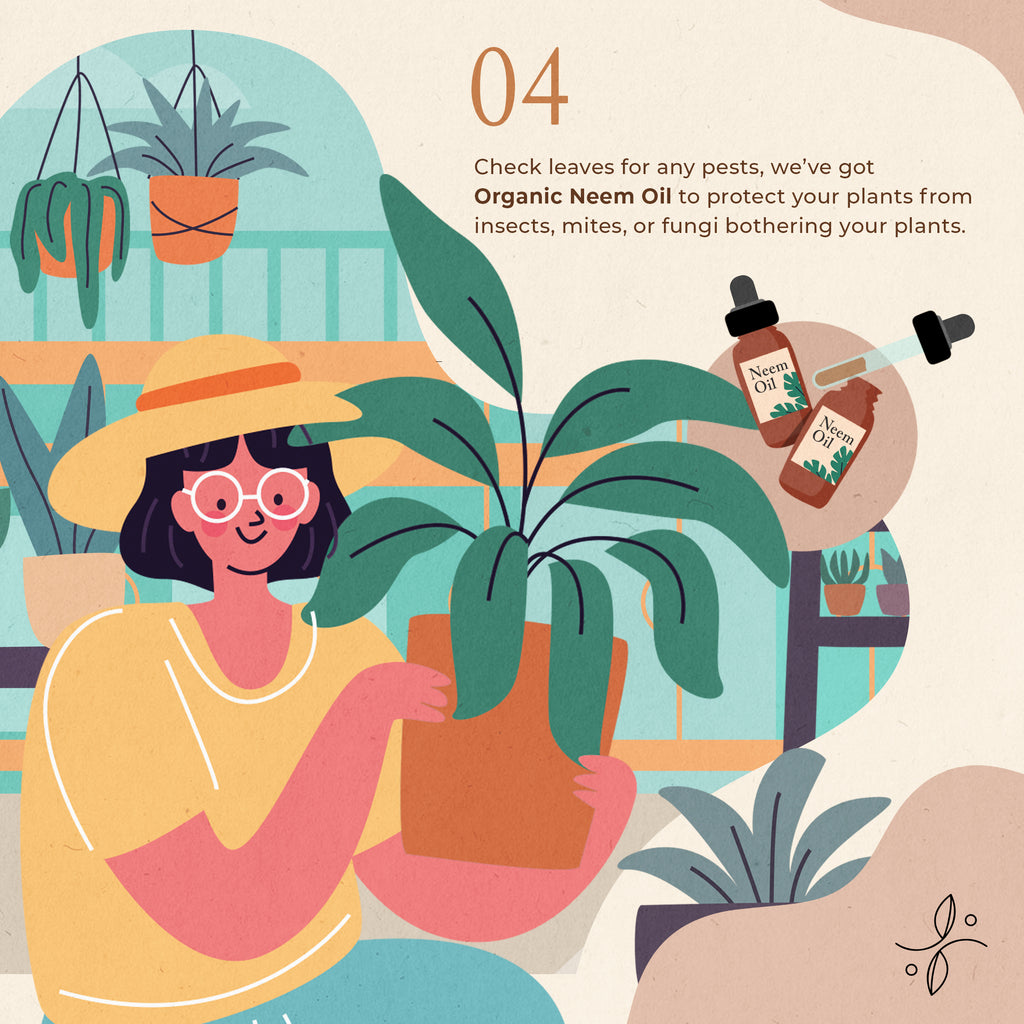From Inside Out: A Guide to Plant Care this Summer
We aren’t the ones who love balmy temps and sunny weather—plants love soaking up the sun too!
As we spend another summer at home, we’re incessantly looking for ways to lift our spirits and new hobbies to delve into. While some have turned to making sushi bake or Dalgona coffee, co-plant parents invested in fresh greenery as it naturally boosts mood, reduces stress, purifies air, and sparks so much joy to our lives!

True enough, we also love the idea from Kinfolk’s invitation to engage with nature and bring the outdoors in and the indoors out. Plants for sunny gardens need at least six to eight hours of full sunlight. If they get sufficient water, they will thrive in full sun from dawn to dusk.
Here are some helpful tips about plant care this summer month and get the transplants off to a good start. Let us bring you nature and greenery to refresh your home this summer!
-
Keep away from direct sunlight!

Indoor plants can really brighten your home and if you have a large windowsill and plenty of sunshine, you’re in luck! While most plants are sun-loving, bringing them outdoors and placing them under full, direct heat can cause sunburn. Yes, plants (just like you!) get sunburn too if not acclimated properly.
Bleached foliage, brown striping on the leaves, and wilted leaves are indicators that your plants are exposed to too much sun. In some cities, brick walls and concrete absorb, store and radiate heat more thus your plants can end up like a fried egg.
Best to move your plants in a shade or when the outdoor temperatures stay consistently above 50 degrees to avoid plant shock and stress. Clip off the burnt leaves and wait for new ones to grow. Don’t forget to move it to a shadier area to bounce back.
2. Acclimate plants properly

Outdoor plants require extra attention and loads of commitment. For indoor plants, gradually move them to a sunnier location within your home each day until you are ready to take them outside.
To move plants outdoors, acclimate but start slow. Then, we recommend placing it in a shady area for a few hours each day. Slowly increase the outdoor time over 7 to 10 days. Now, you can expose your plants to morning sun after about 5 days.
Once fully acclimated outdoors, there are still a few things to keep in mind: The intensity of outdoor sunlight, water and nutrients. It is still best to place your plants that mimic indoor lighting requirements. Warmer months mean they need more water and nutrients too!
3. Adjust your watering routine

Since your plants are outside, their potting mix will dry much faster and can make your plants extra thirsty! Watch out for signs like droopy leaves and remember to water them thoroughly. Remember to promote high humidity for your plants during summer by misting them regularly.
Watering your plant will still depend on rainfall, wind, and humidity—best to adjust your watering routine accordingly. One way to check the moisture level of your plants is by feeling the soil.
Tips for checking the soil moisture: Place your finger into the soil about 2”-3”. If it feels dry then water thoroughly and remove it from the saucer so the water can flow freely from the bottom of the pot. If it’s still moist, skip watering and check again the next day.
If your planter doesn’t have drainage, don’t bring it outdoors as it may accumulate rain. This will lead to root rot and overwatering. Be mindful of the wind when there’s heavy rain or storm. Don’t forget to secure your plant or move them to a sheltered area. If there's drainage, don’t forget to drain the excess water from the catch plate.
4. Watch out for pests!

Since your plants are outside, it’s more susceptible to pests and insects making a home out of your plants. Indoor plants may have mealy bugs and fungus gnats but outdoor plants are more prone to infestations from aphids, caterpillars and Japanese beetles. Always inspect your plants thoroughly before bringing it indoors because you might be bringing these little friends inside too!
Fret not, you can treat your plants with organic pest control methods like our Organic Neem Oil—one that is pressed out of the seeds obtained from neem trees. Our 100% Organic Neem Oil is all-natural and non-toxic to humans and pets. It's an effective and safe leaf cleaner. It reduces insect feeding and acts as a repellent.
Pro tip: Dilute 18-20 drops of 100% Shopleaf Organic Neem Oil in 250ml water and shake well. Do not apply if or when direct sunlight is on foliage. Use once a week.
5. Things to avoid during summer!

Plants still get summer stress due to heat and some of the signs are wilted leaves, pale leaves, yellow leaves, brown leaves, rough brown patches, flowers falling and leaves are droopy.
As much as possible, avoid repotting plants in hot weather because it is stressful for them. Leaves and roots get either damaged or trimmed back. Pruning is just as stressful as repotting. Although pruning promotes new growth and health, it can also be stressful for your babies. Wait until the temperature drops a little before you snip, snip, snip.
Plants create time and space for you to nurture yourself and the things around you. We hope this guide can help you give your plants the TLC it deserves—whether they are indoors or outdoors. Happy summer!
Don’t forget to subscribe to our newsletter!
